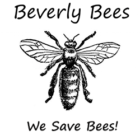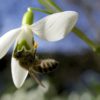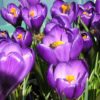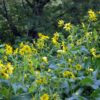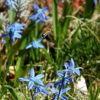Eastern Skunk Cabbage: A Heater For Bees!
by Anita Deeley at BeverlyBees.com
A native plant that creates its own heat, Eastern Skunk Cabbage provides pollen, shelter and warmth for foraging bees.
Blooms: Feb-April Bee Forage: Pollen Pollen Color: Light Yellow
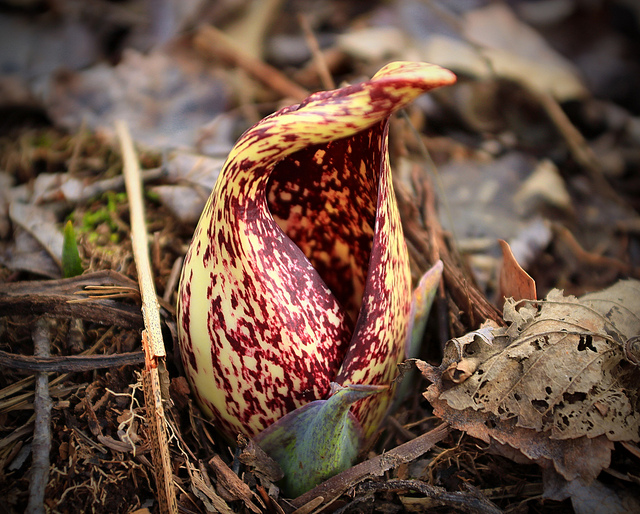
Photo by Nicholas A. Tonelli. Used under Creative Commons Attribution License.
Eastern Skunk Cabbage (Symplocarpus Foetidus) is a herbacceous perennial that flowers in late winter and early spring. Blooms occur anytime from Feb-April throughout the Northeastern United States. Plants prefer damp wooded soils and swampy areas and flower spathes can be seen breaking through snow and ice to bloom. Encased in a hard reddish mottled spathe, flowers appear before leaves, and provide an important early pollen source that honey bees need to rear brood. This plant has green cabbage like leaves and a rotten smell when leaves are crushed, hence its horrible name.
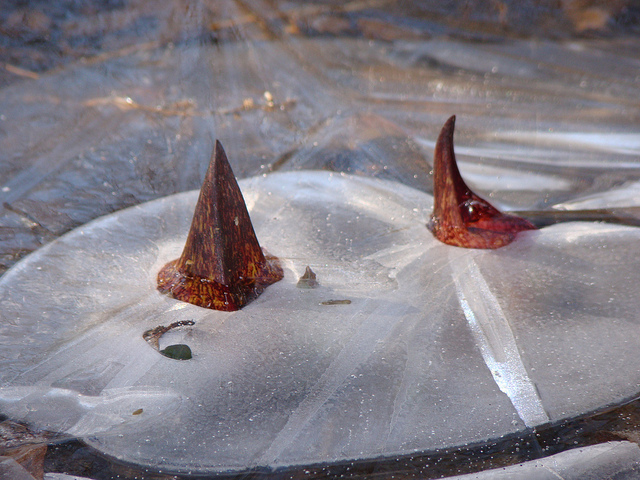
Photo by VasenkaPhotography Used under Creative Commons Attribution License.
Eastern Skunk Cabbage – A Space Heater For Foraging Bees
Even more amazing is this plants ability to create heat and provide warmth and shelter for foraging bees during this cold time of year. Eastern Skunk Cabbage can generate heat reaching temperatures ranging from 59-95 degrees F above air temperature by a process known as thermogenesis. It uses cyanide resistant cellular respiration to melt its way through frozen ground. The head shell around the flower traps the warm air inside creating the prefect little space heater for honey bees.
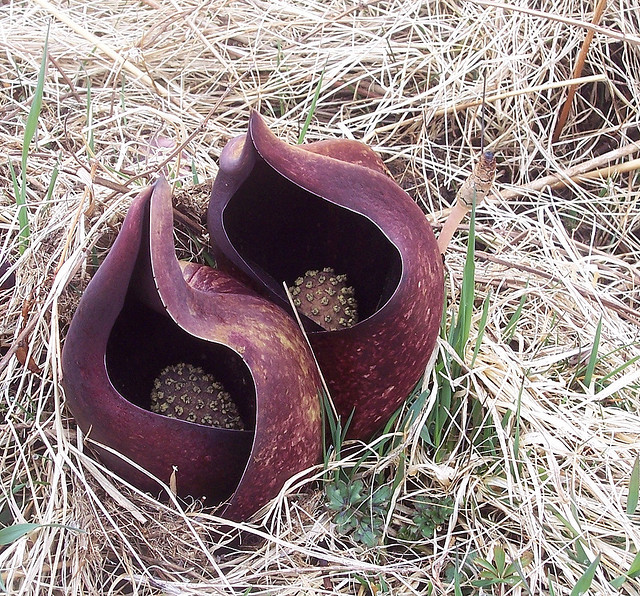
Photo by magnolia1000 Used under Creative Commons Attribution License.
Honey Bees prefer to stop at scented flowers and the flowers of skunk cabbage emit differing scents varying from carrion, apple, turnip and garlic to entice the bees. As the bee forages for pollen to bring home to the hive, the flower emanates heat inside it’s shell creating a shelter for the bee that warms up the bees body so it can return safely home in the cold foraging temperatures that skunk cabbage blooms. A smelly weedy swamp plant functioning as a mini sauna and snack bar for bees – How cool is that!
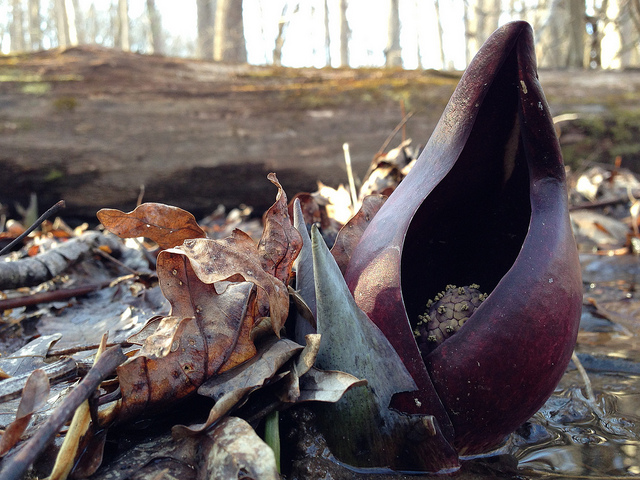
Photo by Fritz Flohr Reynolds used under Creative Commons Attribution-ShareAlike License.
Copyright © 2011-2014. Anita Deeley, BeverlyBees.com. All rights reserved.
Skunk Cabbage Feature Image by Benny Mazur. Used under Creative Commons Attribution License.
